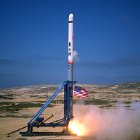This map layer shows the world’s nuclear-weapon-free zones.
A nuclear-weapon-free zone (NWFZ) is an arrangement established by one or more states under international law requiring that ratifying states undertake not to deploy, develop or use any nuclear weapons within their borders. In Germany, the peace movement in the 1980s also called for a nuclear-weapon-free zone to be established across central Europe. This demand had, however, little chance of success given the presence of nuclear weapons stationed in Germany and other parts of Europe as parts of NATO’s defence shield. In addition to the nuclear-weapon-free zones in Latin America, the South Pacific, Asia and Africa, there are also similar agreements covering the Antarctic, space and the seabed. A peculiarity is that some countries under the control of a nuclear-weapon state belong to a nuclear-weapon-free zone. This is the case with Puerto Rico, which has signed up to the Tlatelolco nuclear-weapon-free zone yet is a US overseas territory and thus belongs to a state holding nuclear weapons.






